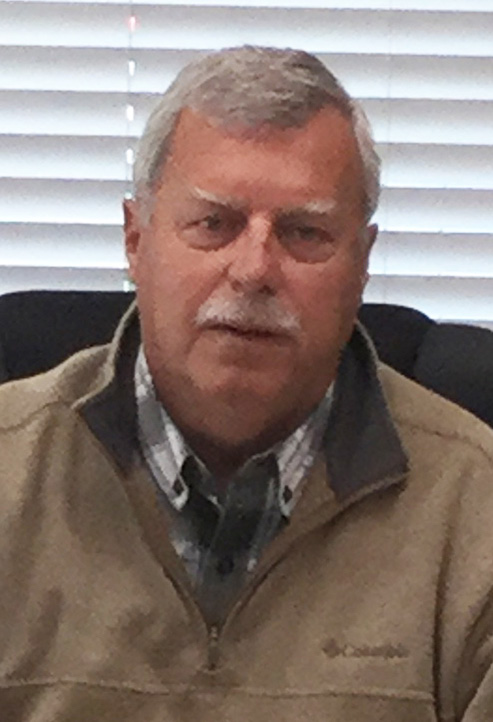Years working in irrigation: 44
Years as manager: 22
Number of employees: 28
Size of service area in acres: 82,000
Amount of water diverted for irrigation per year in acre-feet: 210,000
Main crops irrigated: Malt barley, sugar beets, potatoes, alfalfa, corn, beans
Predominant irrigation methods: Sprinkler
 Irrigation Leader: What is the top issue facing your irrigation district today?
Irrigation Leader: What is the top issue facing your irrigation district today?
Dan Temple: The top issue for the past 30 years has been the declining water table on the Eastern Snake Plain aquifer (ESPA). We pump every gallon of water we deliver from either the Snake River, where we have two pumping plants, or out of the ESPA, where we operate and maintain 180 deep wells. The declining water table has kept district crews busy redesigning, removing, and installing new deep-well pumps to accommodate the deeper pumping depths, spending $20 million to do so. The district also owns its own well-drilling equipment to deepen or drill new replacement wells.
Irrigation Leader: What issues are you preparing for in the future?
Dan Temple: We’re planning and budgeting for routine infrastructure maintenance and gradually converting our open conveyance delivery systems to closed pipeline systems. We convert two or three deep well systems each year, eliminating 1–2 miles of laterals by installing pipelines. Three years ago, we constructed a second 100-cubic-foot-per-second river pumping station with 19 miles of buried pipeline at a cost of $12 million. That remains our biggest project to date.
Irrigation Leader: What are your top issues regarding personnel?
Dan Temple: The top issue is that 50 percent of the district’s employees will be retiring in the next 3 years. We have been active in hiring and developing young, new leaders for the district. The second issue is finding labor. With the labor market the way it is, it’s hard to find people who want to work.
Irrigation Leader: What training do you currently provide to your employees?
Dan Temple: Because of the limited experienced workforce available, our approach is to place any new employees we hire out with seasoned employees to start training and learning their role, whether it is to deliver water, run equipment, or work in the office. We are also always willing to spend funds to send employees to local outside training sessions, when available. The Idaho Water Users Association is helpful in that they provide annual workshops on operations and maintenance and pesticide recertification.
Irrigation Leader: How much do you spend on training for your employees each year?
Dan Temple: Probably $4,000–$5,000.
Irrigation Leader: What is the most important thing you have learned as manager?
Dan Temple: You have to be able to communicate effectively with your board of directors, explaining the district’s needs and benefits, so that it can make informed budget decisions. Also, it was important to learn that it is okay to rely on the advice and ideas of other people, such as fellow managers, and to learn from them.
Irrigation Leader: What are the top skills needed to be a successful manager?
Dan Temple: In addition to communicating with your directors, you have to be able to communicate with your staff and water users. Always respond to their concerns and questions, even if you can’t give them the answer or result they are seeking.
Dan Temple is manager of A&B Irrigation District in Rupert, Idaho. He can be contacted at dtemple@abirrigation.org.
